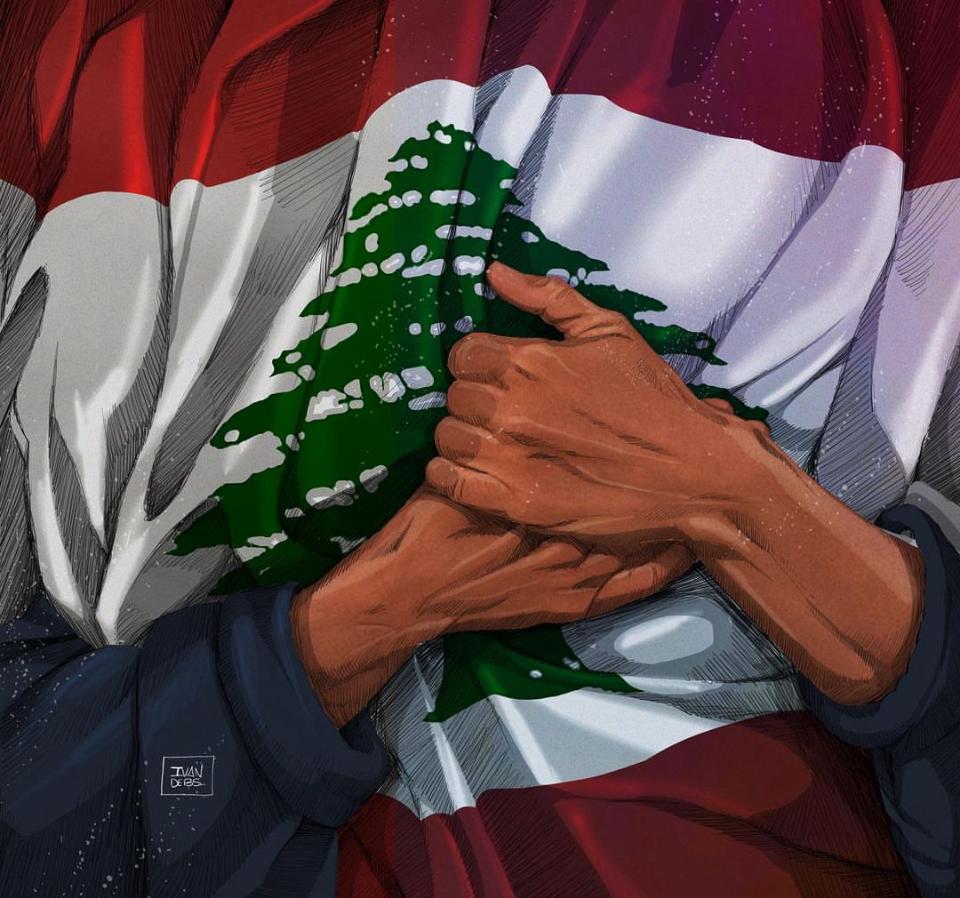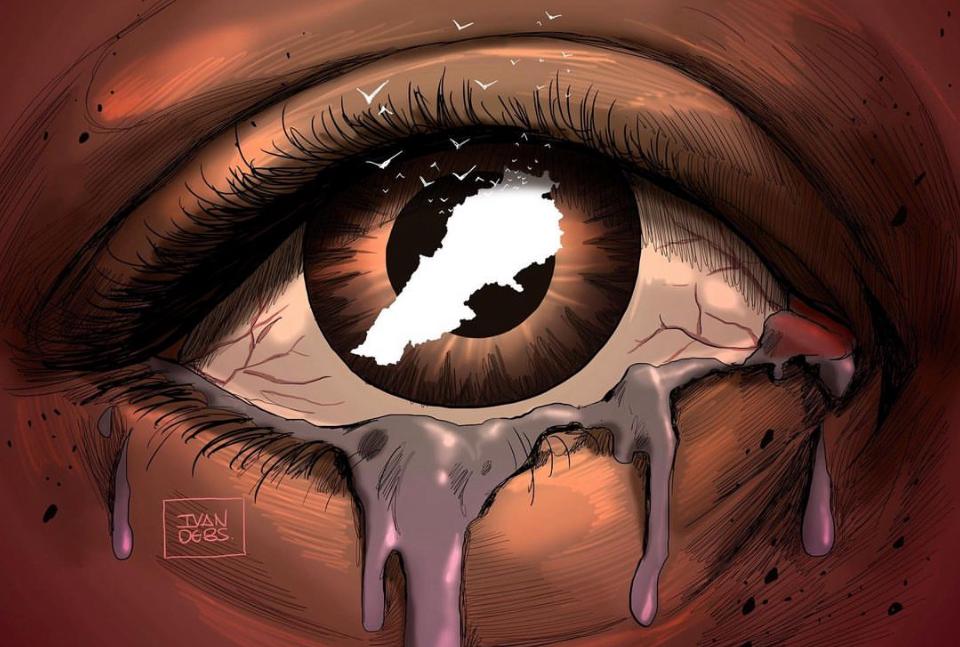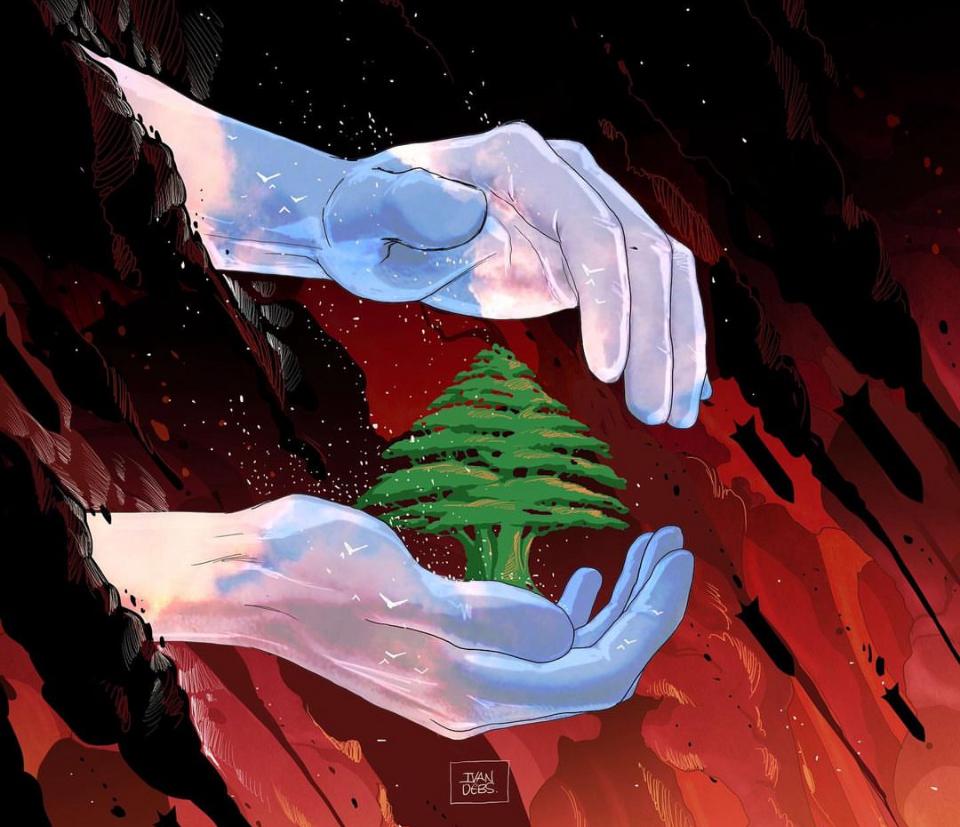Ivan Debs is a Lebanese illustrator whose work reflects his African roots and Lebanese heritage. Here, he shares his artistic journey, inspirations and how his illustrations express the struggles, hopes and beauty of Lebanon.

1. What first drew you to illustration and how has your Lebanese background influenced your artistic style and storytelling?
I began drawing when I was around three years old. Back then, I was obsessed with animals. Anytime I saw them, I would draw them. Lions fascinated me, largely because of The Lion King. Over time, my inspirations evolved. Growing up in Africa and then discovering Lebanon later in life, I found myself balancing my African roots with my Lebanese heritage. This allowed me to realize how many social issues are universal.
It’s my humble contribution to illustrate the struggles, the joy and the love for Lebanon that we all feel. When I create, it reflects how people feel, and I continue because it’s my way of expressing our shared emotions about this country that doesn’t always love us back.
2. . What are some key influences or inspirations behind your work?
My childhood was defined by my obsession with Japanese manga, which had a huge impact on me. Then, I discovered French comic books from the 70s. These influenced my style a great deal. Later, I was drawn to French engravings from the 18th century, shaping my artistic vision even further. Now, one of my main masters is Gibran Khalil Gibran; he continues to inspire me with his profound understanding of humanity. Personal experiences, especially growing up in Africa and witnessing political and social struggles, also shape my work. This has shifted my focus to exploring the human experience — good versus evil— and spirituality.
 3. Your illustrations often convey deep messages and emotions. How do you approach visual storytelling and what themes are you most passionate about exploring through your art?
3. Your illustrations often convey deep messages and emotions. How do you approach visual storytelling and what themes are you most passionate about exploring through your art?
For me, art is instinctual — it’s something inside that I need to express visually. It’s how I convey my feelings and what’s happening around me. My illustrations often touch on politics, especially since I worked for newspapers and witnessed political struggles, both in Lebanon and Africa, which left a mark on me. But as I grew older, my focus shifted more toward human experiences: less politics and more about exploring the good and evil within us. Lately, spirituality has become a key theme. My visual storytelling is about creating messages that speak to both the real world and the inner world of emotions and conflicts.
4. Lebanon has such a rich cultural heritage. How do you incorporate Lebanese history, traditions and social issues into your illustrations?
Lebanese heritage was passed down to me by my parents. When I came to Lebanon to study, I fell in love with the country. This cultural connection, paired with my African background, gave me a unique perspective. I incorporate social issues and the Lebanese experience into my work by illustrating the shared emotions, namely the struggles, pain and love, that we all feel for Lebanon. My art is a way to express the fear, hope and anger we have for this land that doesn’t always seem to love us back. It’s a hard relationship, but we all want to live in peace here, and I try to reflect that in my illustrations.
 5. What are some challenges you’ve faced in your career as an illustrator and how have you overcome them?
5. What are some challenges you’ve faced in your career as an illustrator and how have you overcome them?
Every day is a struggle, and life isn’t always fair, but I’ve learned that if you create from the heart, it will touch others. That’s what really matters. I’ve faced challenges, especially related to the political and social turmoil in Lebanon, and this is reflected in my work. Balancing the frustration of living in such a difficult environment with the need to keep creating has been one of my biggest challenges. But I continue because art is how I express not only my struggles but the collective emotions of the people around me.
6. Do you prefer working with traditional mediums or are you more inclined toward digital illustration?
I feel like my work is a contrast between digital art and classical art. This reflects a contrast within me as well. The digital side of my work is fast and impulsive, like short bursts of music. On the other hand, my hand-drawn pieces on paper are more patient, detailed and complex. Both sides of my character come out in these different mediums. When I have something urgent to say, I’ll use digital art; but when I have the time, I love to draw by hand on paper. For me, the medium is secondary to the message I’m trying to communicate.
7. What advice would you give young Lebanese illustrators who are looking to establish their voice and identity in the art world?
My advice would be to create from the heart. Life is unfair, and the road ahead might not be easy, but if you pour your passion into your work, it will resonate with others. It’s important to focus on what you want to say through your art and remember that the medium isn’t as important as the message. Find your balance between what’s urgent and what requires patience. Let your voice be heard in every piece you create. Stay connected to your roots, but also embrace the universality of human experiences.
if you liked reading this, check our article interview with the Lebanese explorer Maxime Chaaya.

